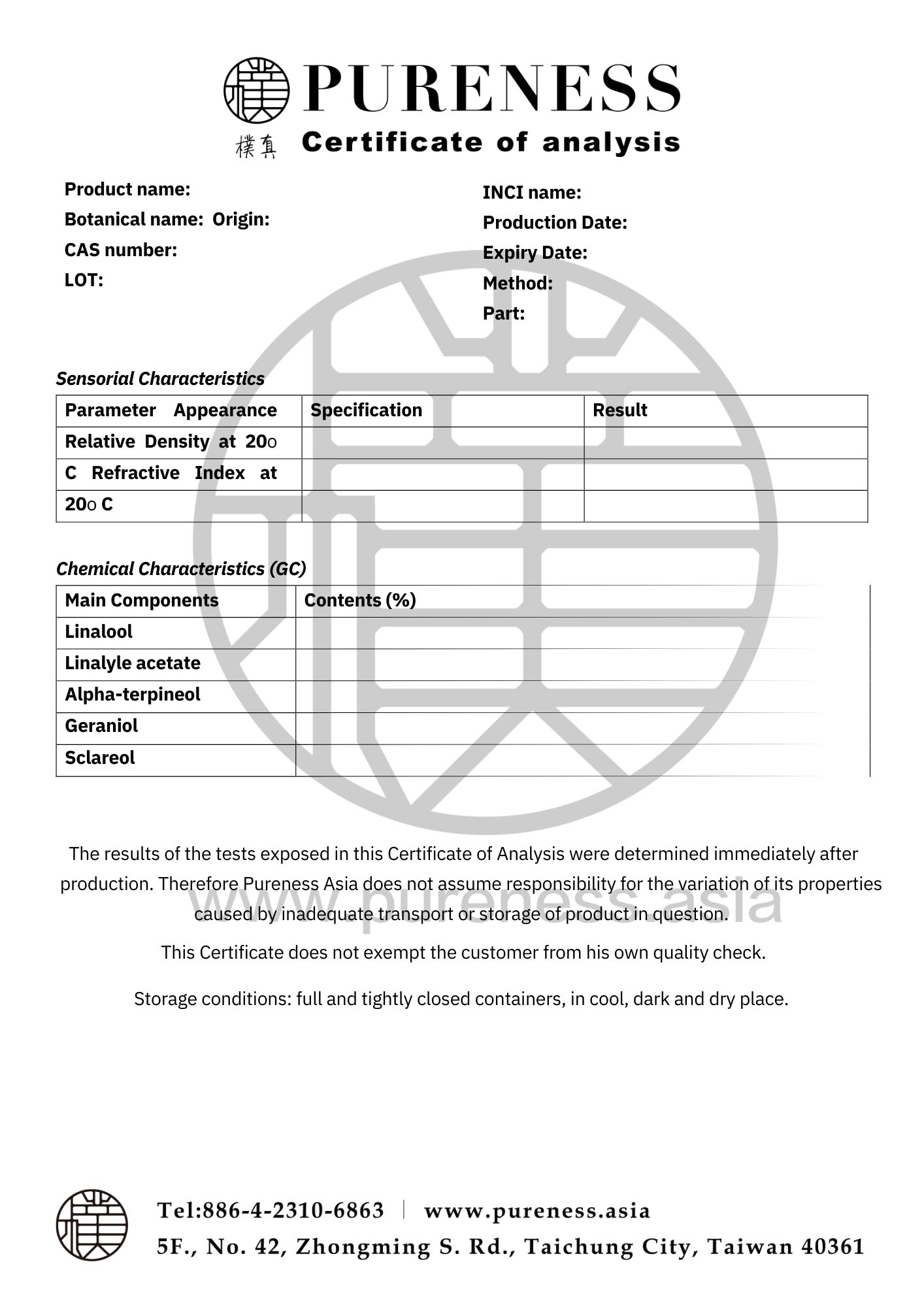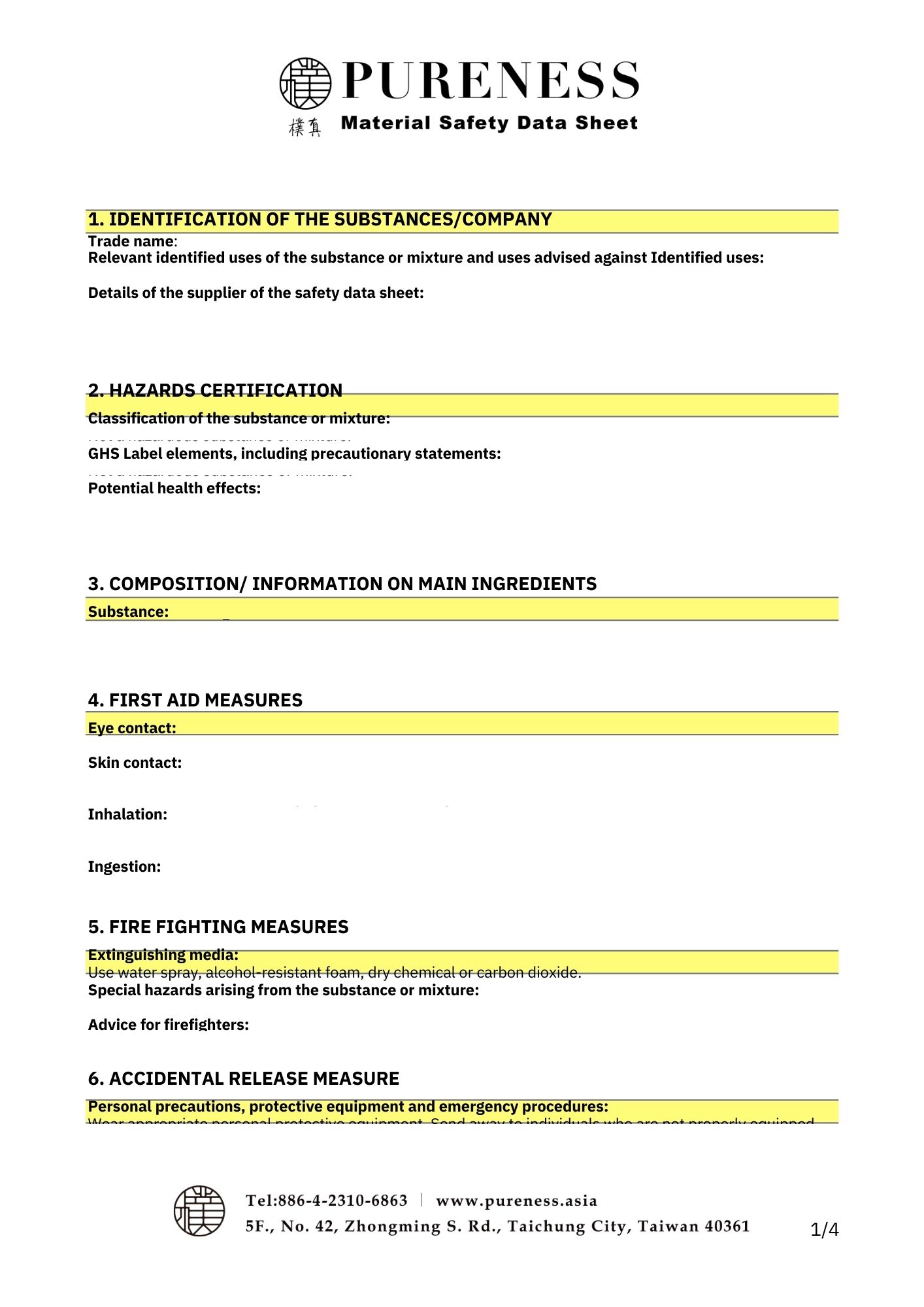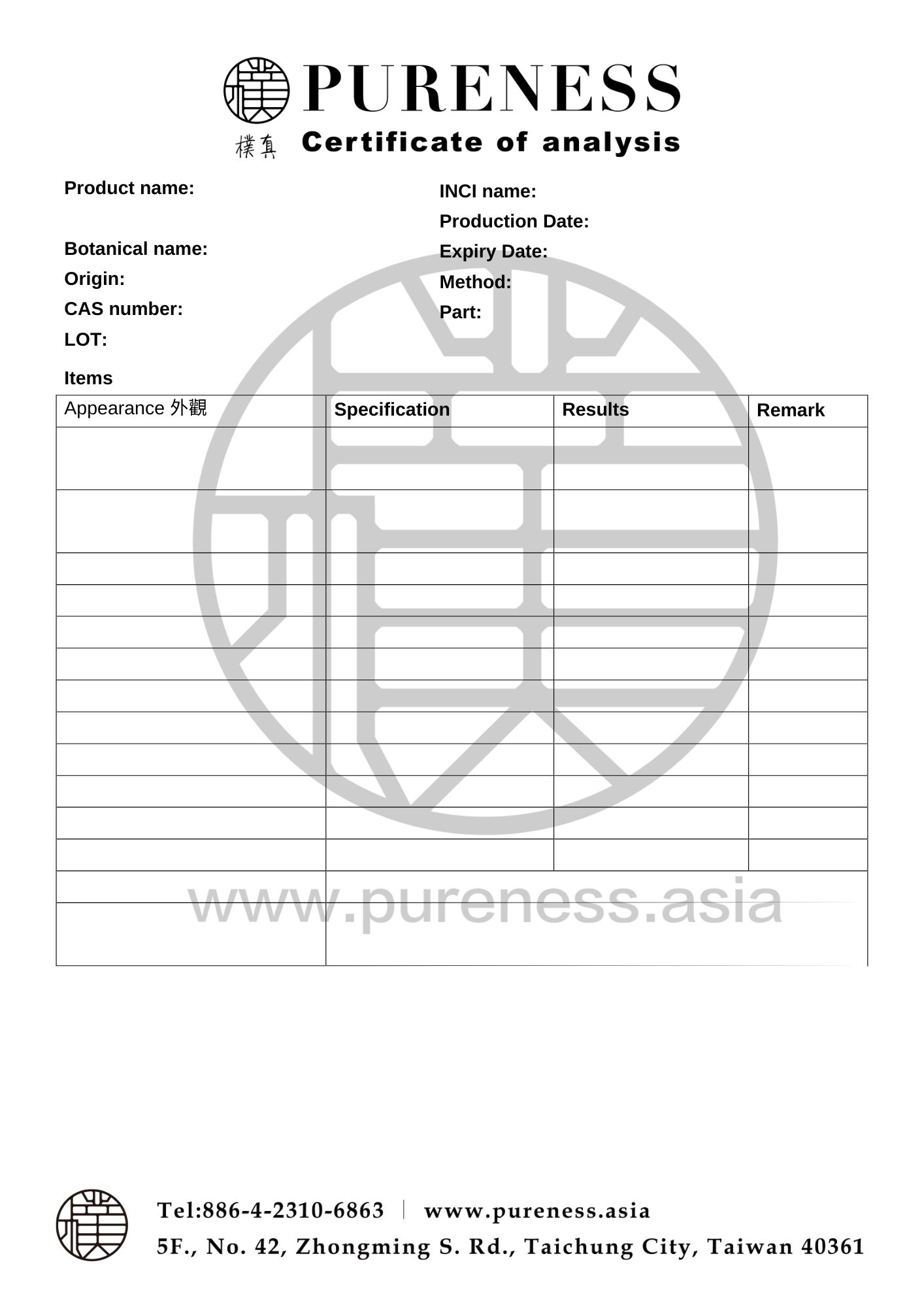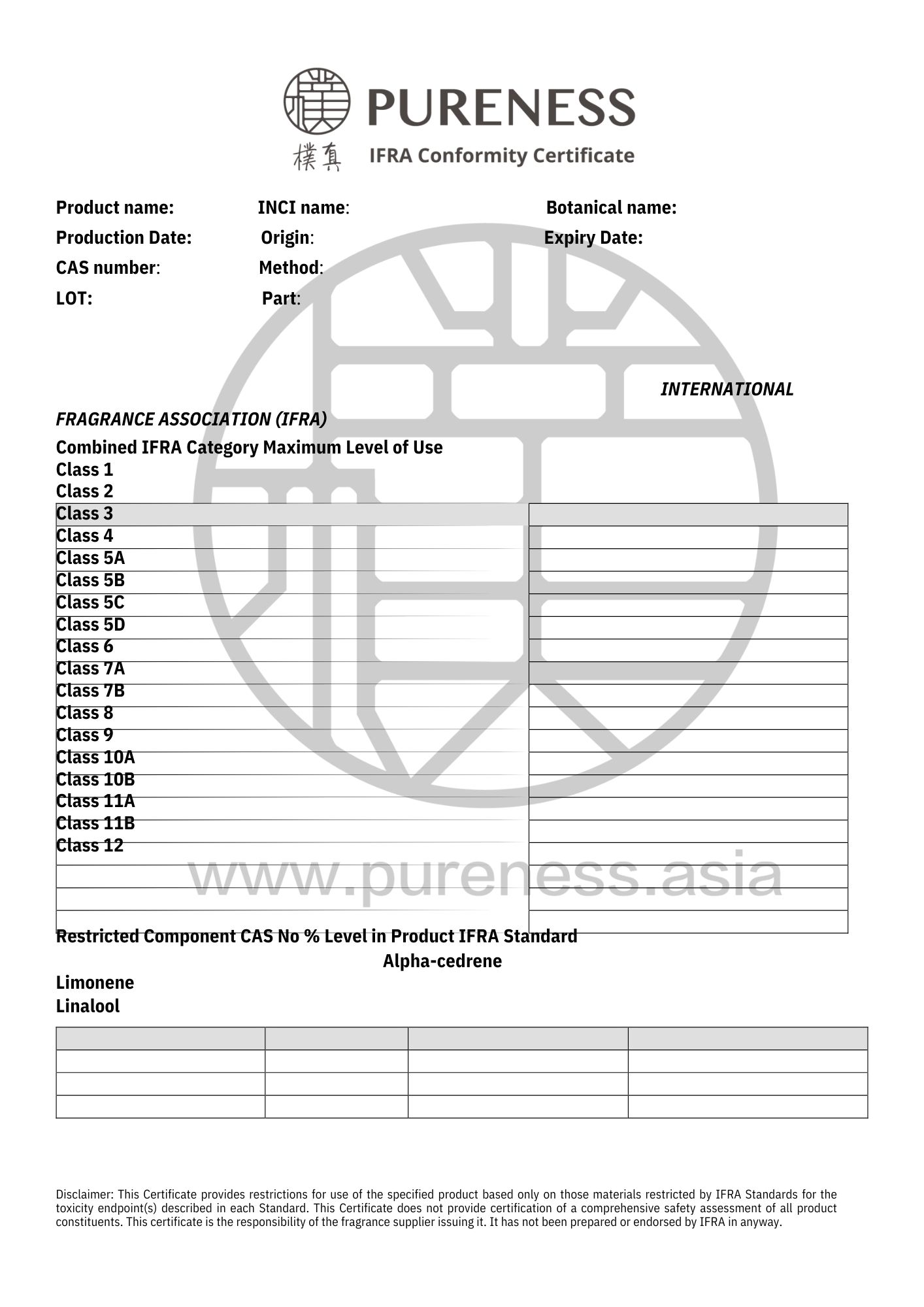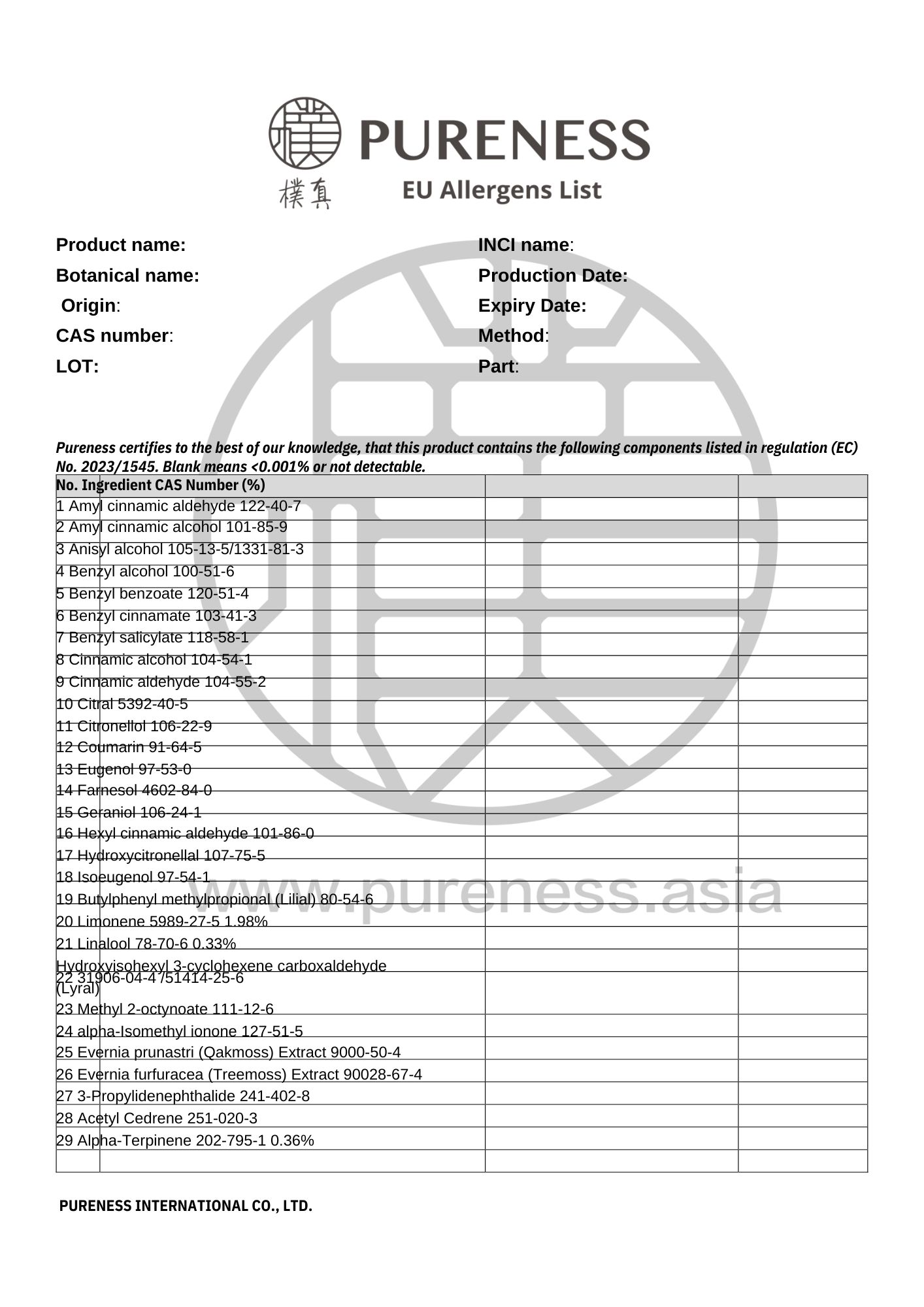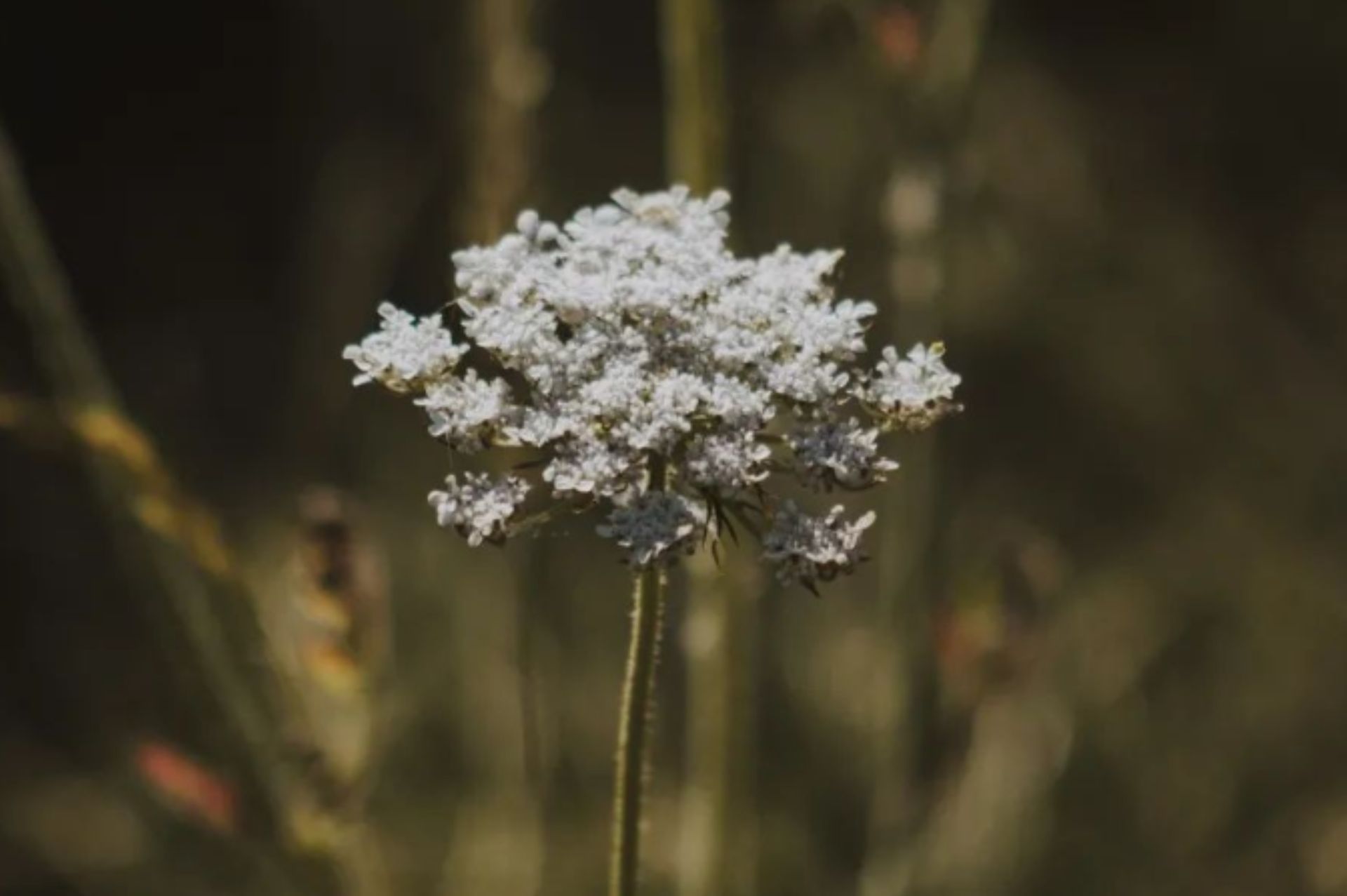
Ajowan
Scientific name|Trachyspermum ammi
Origin|India
Classification|Spices series
Specifications|500g-25kg Please contact sales for details
Extraction part|Seed
Extraction method | Distillation
Plant family|Apiaceae
Aroma|A combination of the bitterness of mint and oregano with the licorice-like flavor of anise
▎Essential Oil Introduction
Indian Ajowan, originally from Egypt, was later introduced to India and other parts of Asia. It is highly adaptable and has a strong aroma. The essential oil of Indian Ajowan is extracted from its seeds, and due to its potent scent, it can easily overpower other essential oils, so careful dosage is required when blending.
▎Component Analysis
|Main component
The components include p-cymene, terpinene, β-caryophyllene, terpinene-4-ol, thymol, and carvacrol.
|Raw Material Certifications
To obtain relevant certification information, please contact us on WhatsApp.
▎References
- Fu CC, et al. Secondary Metabolites of Osmanthus fragrans: Metabolism and Medicinal Value. Front Pharmacol. 2022. Jul 18;13:922204.
- Wu L, et al. Exploration of Osmanthus fragrans Lour.'s composition, nutraceutical functions and applications. Food Chem. 2022. May 30;377:131853.
- Wang B, et al. Traditional uses, phytochemical constituents and pharmacological properties of Osmanthus fragrans: A review. J Ethnopharmacol. 2022. Jul 15;293:115273.
- Wang Z, et al. The complete mitochondrial genome of Osmanthus fragrans (Lamiales, Oleaceae) from China. Mitochondrial DNA B Resour. 2021. Jun 21;6(7):2056-2057.
- Chen H, et al. Whole-genome resequencing of Osmanthus fragrans provides insights into flower color evolution. Hortic Res. 2021. May 1;8(1):98.
- Liao X, et al. Identification and quantification of the bioactive components in Osmanthus fragrans roots by HPLC-MS/MS. J Pharm Anal. 2021.
- Shi Y, et al. Genome-wide miRNA analysis and integrated network for flavonoid biosynthesis in Osmanthus fragrans. BMC Genomics. 2021. Feb 27;22(1):141.
- Kong F, et al. Assessing the impact of climate change on the distribution of Osmanthus fragrans using Maxent. Environ Sci Pollut Res Int. 2021. Jul;28(26):34655-34663.
- Zhang Y, et al. The Potential Protective Effect of Iridoid Glycosides Isolated From Osmanthus fragrans Seeds Against the Development of Immune Liver Injury in Mice. Front Pharmacol. 2021. Nov 8;12:760338.
- Song HY, et al. Bioactivity-Guided Extract Optimization of Osmanthus fragrans var. aurantiacus Leaves and Anti-Inflammatory Activities of Phillyrin. Plants (Basel). 2021. Jul 28;10(8):1545.
- Fu J, et al. Transcriptomic analysis of flower opening response to relatively low temperatures in Osmanthus fragrans. BMC Plant Biol. 2020. Jul 16;20(1):337.
- Jeong DE, et al. Anti-inflammatory activity of phenylpropyl triterpenoids from Osmanthus fragrans var. aurantiacus leaves. Int Immunopharmacol. 2020. Sep;86:106576.
- Hozumi H, et al. Aromatherapies using Osmanthus fragrans oil and grapefruit oil are effective complementary treatments for anxious patients undergoing colonoscopy: A randomized controlled study. Complement Ther Med. 2017. Oct;34:165-169.
|Some images sourced from the internet. Contact for copyright removal|
